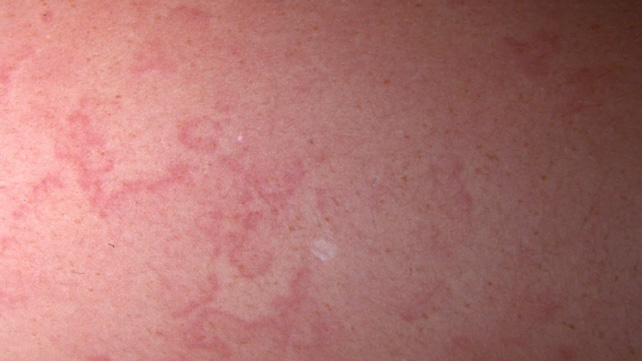The exact link between strep infection and rheumatic fever isn't clear, but it appears that the bacterium "plays tricks" on the immune system. The strep bacterium contains a protein similar to one found in certain tissues of the body. Therefore, immune system cells that would normally target the bacterium may treat the body's own tissues as if they were infectious agents — particularly tissues of the heart, joints, skin and central nervous system. This immune system reaction results in inflammation.
If your child receives prompt and complete treatment with an antibiotic to eliminate strep bacteria — in other words, taking all doses of the medication as prescribed — there's little to no chance of developing rheumatic fever. If your child has one or more episodes of strep throat or scarlet fever that aren't treated or not treated completely, he or she may — but won't necessarily — develop rheumatic fever.
Rheumatic fever (RF), also known as acute rheumatic fever (ARF), is an inflammatorydisease that can involve the heart, joints, skin, and brain.[1] The disease typically develops two to four weeks after a throat infection.[2] Signs and symptoms include fever, multiple painful joints, involuntary muscle movements, and occasionally a characteristic non-itchy rash known as erythema marginatum. The heart is involved in about half of cases. Permanent damage to the heart valves, known as rheumatic heart disease (RHD), usually only occurs after multiple attacks but may sometimes occur after a single case of ARF. The damaged valves may result in heart failure. The abnormal valves also increase the risk of the person developing atrial fibrillation and infection of the valves.[1]
Acute rheumatic fever may occur following an infection of the throat by the bacteriaStreptococcus pyogenes.[1] If the infection is untreated rheumatic fever can occur in up to three percent of people.[3] The underlying mechanism is believed to involve the production ofantibodies against a person's own tissues. Some people due to their genetics are more likely to get the disease when exposed to the bacteria than others. Other risk factors includemalnutrition and poverty.[1] Diagnosis of ARF is often based on the presence of signs and symptoms in combination with evidence of a recent streptococcal infection.[4]
Treating people who have strep throat with antibiotics, such as penicillin, decreases their risk of getting ARF.[5] This often involves testing people with sore throats for the infection, which may not be available in the developing world. Other preventative measures include improvedsanitation. In those with ARF and RHD prolonged periods of antibiotics are sometimes recommended. Gradual return to normal activities may occur following an attack. Once RHD develops, treatment is more difficult. Occasionally valve replacement surgery or repair is required. Otherwise complications are treated as per normal.[1]
Acute rheumatic fever occurs in about 325,000 children each year and about 18 million people currently have rheumatic heart disease. Those who get ARF are most often between the ages of 5 and 14,[1] with 20% of first-time attacks occurring in adults.[6] The disease is most common in the developing world and among indigenous peoples in the developed world.[1] In 2013 it resulted in 275,000 deaths down from 374,000 deaths in 1990.[7] Most deaths occur in the developing world where as many as 12.5% of people affected may die each year.[1] Descriptions of the condition are believed to date back to at least the 5th century BCE in the writings of Hippocrates.[8] The disease is so named because its symptoms are similar to those of some rheumatic disorders.[9]

